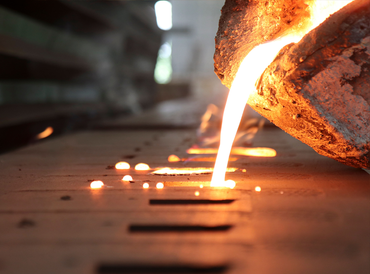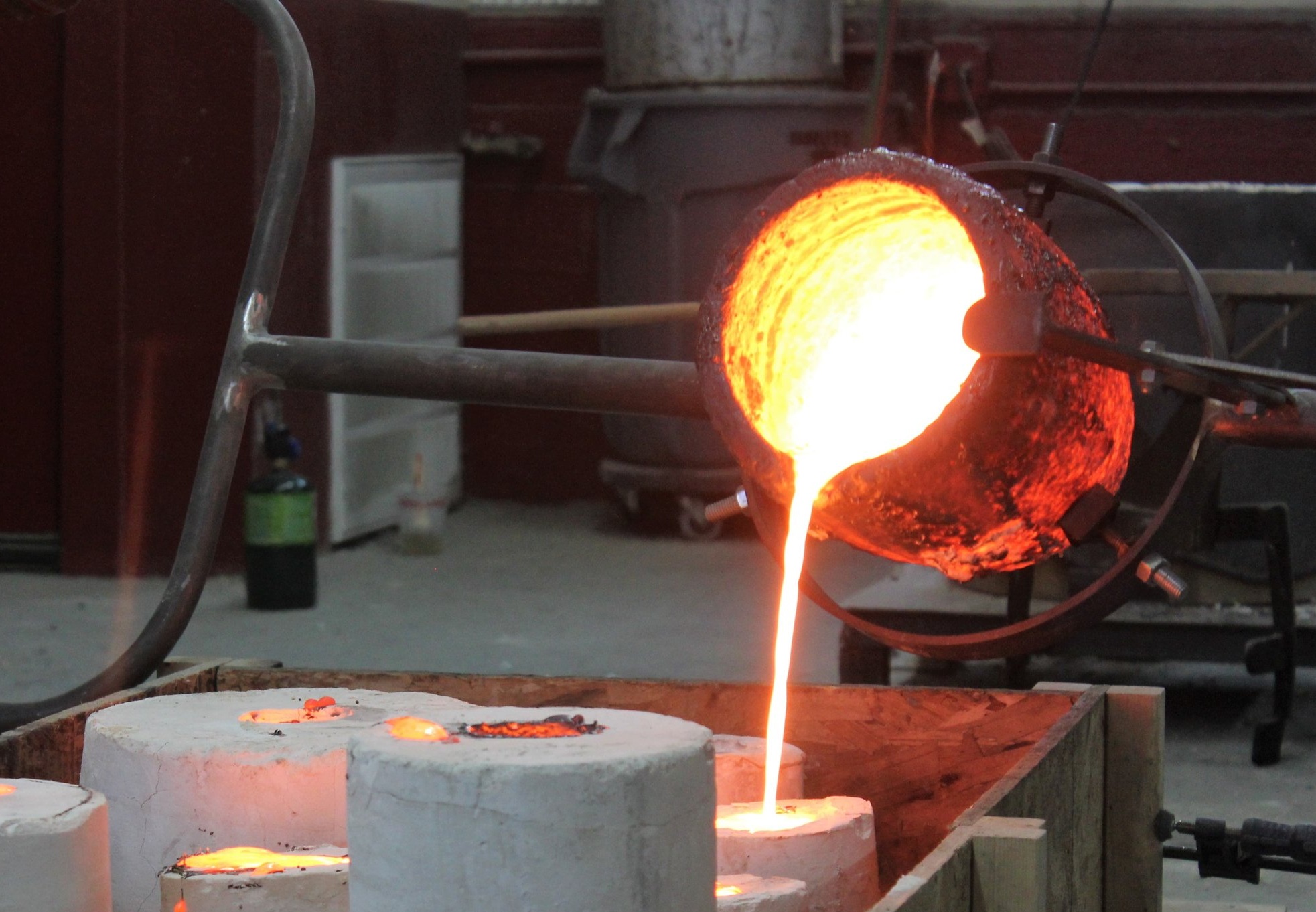How Modern Foundries Blend Traditional Metal Casting with Automation
Wiki Article
Checking out the Art of Metal Casting: Techniques and Applications in Modern Foundries
Metal casting is a time-honored craft that integrates virtuosity with engineering accuracy. From old methods to contemporary developments, this process has developed substantially. Different techniques, such as sand casting and lost-wax casting, display the adaptability of the tool. Meanwhile, developments like 3D printing are reshaping how factories run. As the lines in between functionality and creativity blur, one need to consider how these developments effect both typical methods and contemporary applications. What lies ahead in this progressing landscape?The Principles of Metal Casting
Metal casting, a critical procedure in manufacturing, includes putting molten metal right into a mold and mildew to attain a preferred form. This strategy acts as a foundation in the production of complicated steel components throughout numerous industries. Trick elements of metal casting include the choice of products, which can range from light weight aluminum to steel, each picked for its specific properties and application suitability. The process begins with mold development, which can be made from sand, steel, or porcelains, depending upon the casting method made use of. The molten metal is after that meticulously poured into the mold and mildew, where it cools down and solidifies. Essential elements such as temperature control, cooling rate, and mold and mildew layout greatly affect the end product's high quality and attributes. In enhancement, recognizing the chemical and physical homes of the steel help in maximizing casting efficiency, eventually boosting the efficiency of the manufacturing procedure and making certain high-quality result tailored to particular needs.Traditional Casting Techniques
Typical casting strategies encompass a variety of methods that have stood the test of time, showing their effectiveness in creating complex steel components. One noticeable approach is sand casting, which utilizes a mixture of sand and a bonding agent to produce molds. The versatility of sand casting permits for the production of diverse forms, making it ideal for both large and small manufacturing. An additional notable technique is investment casting, frequently made use of for accurate and complicated geometries. This method includes developing a wax pattern that is covered in a ceramic shell, which is then warmed to get rid of the wax, leaving a dental caries for molten steel. Furthermore, pass away casting is utilized for high-volume manufacturing, where molten steel is injected right into recyclable metal molds. Each of these typical methods remains pertinent, showcasing the craftsmanship and ability inherent in the art of metal casting, while fulfilling the demands of different industries.Modern Innovations in Metal Casting
As sectors evolve, innovations in metal casting are improving production processes and enhancing effectiveness. Advanced technologies such as 3D printing and computer-aided style (CAD) are revolutionizing mold production, permitting for intricate styles that were formerly unattainable. These approaches help with quick prototyping, decreasing preparations and cultivating imagination in item growth.In addition, the integration of automation and robotics in foundries is improving procedures, decreasing human mistake, and increasing safety. Smart sensing units and real-time monitoring systems enable specific control of temperature and product residential properties, making certain greater high quality outcomes.
Lasting techniques are emerging, with the use of recycled products and energy-efficient heaters, decreasing ecological effect. The adoption of advanced alloys and composite products is also increasing the opportunities of steel casting, resulting in stronger and lighter elements. Generally, these contemporary advancements are changing metal casting right into an extra effective, accurate, and environmentally accountable industry.
Applications Throughout Different Industries

While diverse markets increasingly depend on metal casting, the strategy's adaptability plays a crucial duty in meeting details application demands. In the vehicle sector, metal casting is necessary for generating engine components, transmission real estates, and various other intricate parts that require accuracy and sturdiness. The aerospace market take advantage of light-weight casted elements, ensuring both performance and fuel effectiveness. In addition, the building industry makes use of steel casting for architectural elements, such as light beams and sustains, improving the honesty of buildings and bridges.
Additionally, the power market employs metal casting for wind turbine blades and various other considerable machinery that need to hold up against severe problems. Clinical devices also see applications of steel casting, specifically in medical tools and prosthetics, where precision is important - Aluminum Foundry. Overall, the flexibility and reliability of steel casting make it essential across numerous areas, adding to the innovation of technology and framework in contemporary culture
The Artistic Side of Metal Casting
Typically associated with commercial applications, steel casting also finds its area in the domain name of art, where knowledgeable craftsmens change liquified metal into meaningful sculptures and intricate designs. This imaginative side of metal casting incorporates diverse strategies, consisting of sand casting, lost-wax casting, and financial investment casting, each offering unique possibilities for creativity. Artists make use of these techniques to produce jobs that range from abstract kinds to realistic depictions, enabling individual expression and commentary on modern problems.
Often Asked Concerns
What Precaution Are Necessary in a Metal Casting Shop?
Crucial precaution in a steel casting shop include individual protective equipment, appropriate ventilation, emergency protocols, training in dealing with liquified steels, normal devices upkeep, and clear communication of threats to guarantee employee safety and security and health and wellness. Aluminum Foundry.How Do Environmental Rules Influence Metal Casting Processes?
Ecological laws substantially influence steel casting procedures by mandating using cleaner modern technologies, minimizing exhausts, and promoting waste management techniques. Compliance commonly requires investments in tools, training, and adjustments to existing procedures to lessen ecological impact.What Are the Typical Problems in Metal Spreadings?
Usual defects in metal spreadings include porosity, contraction, inclusions, and misruns. These problems can emerge from improper mold design, poor temperature level control, or contamination, eventually impacting the architectural integrity and overall high quality of the final product.How Is Waste Managed During Metal Casting Manufacturing?
Waste monitoring in metal casting manufacturing entails reusing scrap steel, executing reliable product use, and making use of sophisticated modern technologies to reduce waste. Factories take on practices like sand reclamation and proper disposal approaches to minimize ecological influence.What Career Opportunities Exist in the Metal Casting Market?
The metal casting industry provides diverse profession possibilities, including roles such as shop supervisor, metallurgical designer, top quality control assessor, pattern maker, and manufacturing manager, accommodating different ability and expertise in manufacturing procedures.Metal casting, a pivotal procedure in production, entails putting liquified metal into a mold to attain a wanted form. Furthermore, die casting is utilized for click here for info high-volume manufacturing, where liquified steel is infused into reusable steel molds. While diverse industries increasingly count on metal casting, the technique's flexibility plays a crucial duty in conference certain application requirements. Typically associated with commercial applications, metal casting likewise finds its area in the domain name of art, where experienced craftsmens change liquified metal into elaborate layouts and expressive sculptures. Waste monitoring in steel casting production involves recycling scrap steel, implementing efficient product usage, and utilizing innovative innovations to minimize waste.
Report this wiki page